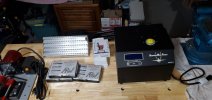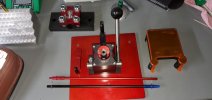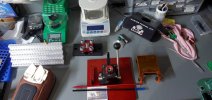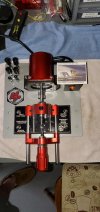What Mike said.
I dropped the torch method several years ago.Even with Templaq you can easily over heat the brass and ruin it as I did it with high quality brass and I now use salt bath method.Some say it's not as perfect as the induction method but at least I have not ruined brass except when I did it too long in the salt to see what happens.The brass was so soft it crushed the shoulder when trying to load a bullet in the dummy brass so salt bath annealing does work,maybe not perfect as the AMP but well enough for me.
There is NO better process annealing than dip annealing, as there is no way to improve on the right temperature to begin with.
You cannot full anneal with dip annealing. It isn't possible, because the temperature is below 1200degF, which is required for full annealing. In contrast, you could easily full anneal with a flame, or with miscalculated induction.
If you managed to collapse shoulders, your seating forces were in extreme.
IYO, what is the "correct" temperature and duration? Say for "large rifle" brass in the neighborhood of 30-06, 7 mag, etc...
It doesn't matter what the cartridge brass is with dip annealing. I set anywhere in 750-850degF. When my temperature measure reads stable in this range, It's ready for dipping. But you could dip at 650 or 1,000 it doesn't really matter, because the grain only grows so much at these temps,,, it happens in a couple seconds or a couple hours just the same.
Cold brass does soak a little heat off the bath, but not much at all, and this is a huge range which you would not stray from with any number of single cases. We're talking a couple degrees, as the bath has a lot more mass than the brass in contact, and it's not as temperature conductive.
To suggest that I make too much of this is just opposite of what I'm doing.
I'm trying to help get this much RIGHT, and I know of no simpler way to do just that.
Personally, I've dip annealed with pure lead for decades. That is not easy, and I didn't do this to save money or effort.
I did it because I know it's the best.
In all this time it still wouldn't surprise me if I'm one of a mere handful living who can pull off lead dip annealing successfully.
But now we have salt bath.
ANYBODY can do this. ANYBODY can anneal every case, to any depth, exactly the same. It's cheap and there is no way to get it wrong.




